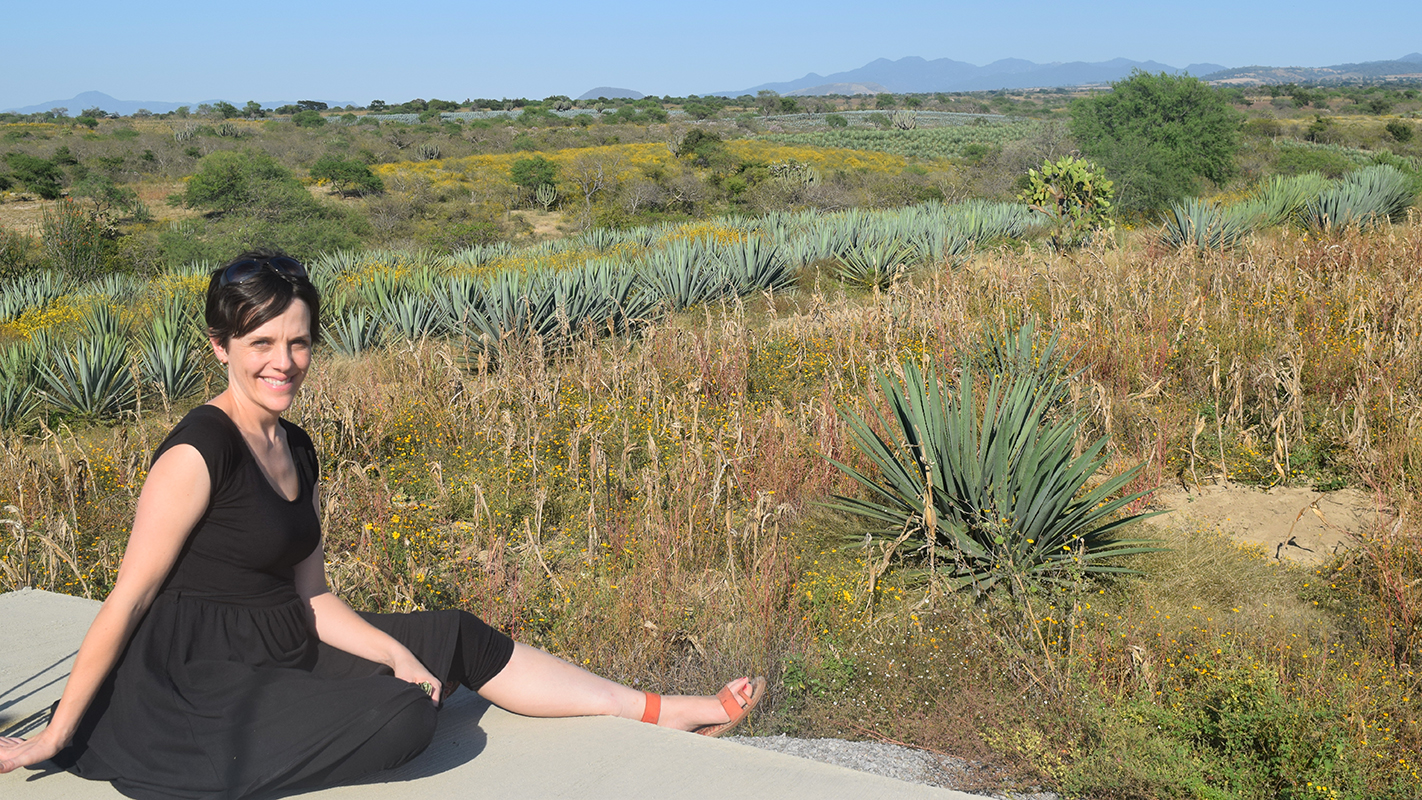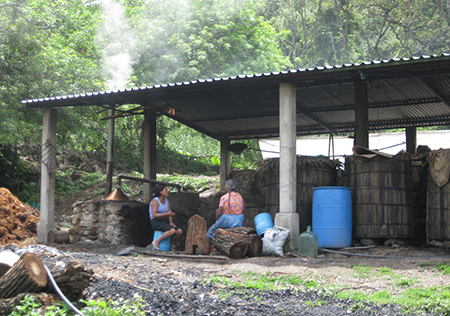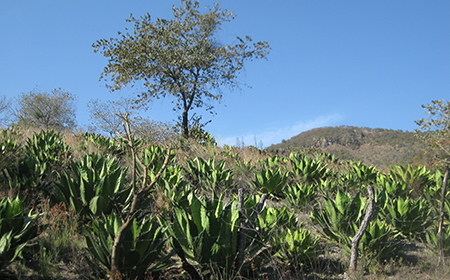Tequila, Mezcal and Social Science: Q&A With Sarah Bowen

Sarah Bowen knows a lot about tequila and mezcal. Her new book, Divided Spirits: Tequila, Mezcal, and the Politics of Production, explores the complex web of relationships – from farmers to bartenders – involved in transforming agave plants grown in Mexico into high-end spirits and cocktails consumed around the world. It’s an industry that has been the subject of considerable political debate in Mexico and still grapples with significant social challenges.
We recently had the opportunity to pick Bowen’s brain about tequila, mezcal, and Bowen’s work as a sociology researcher at NC State University.
The Abstract: You’re a sociologist who studies the intersection of food, drink, and society. How do you get into something like that? Did you start out fascinated by food? Or did you become interested in food after becoming fascinated by sociology?
Sarah Bowen: I actually started out more interested in agriculture, and I got my undergraduate degree in agricultural engineering. I spent a few years helping design conservation projects for dairy farmers, and then decided I wanted to understand the social processes that affect farmers’ decisions. So I went to graduate school for sociology, initially thinking I would study soil conservation, and I became fascinated by the tequila industry – how could you not?
TA: You published your first paper on agave farming in 2007, and you’re still doing work in that area. What drew you to studying tequila and mezcal?
Bowen: My first trip to Jalisco, where most tequila is produced, was actually back in 2004. I was in graduate school at the University of Wisconsin-Madison, and they had an exchange program with the University of Guadalajara’s campus in Autlán, a small city in southern Jalisco. The tequila industry was suffering from a severe shortage of agave. The industry has historically had a hard time managing the supply and demand of agave, in part because blue agave takes 6-8 years to mature after being planted. In response to the shortage that was going on at that time, tequila companies had moved into southern Jalisco and started renting land from small farmers and planting it with agave.

Researchers at the University of Guadalajara were looking for a research assistant to interview farmers in the region and see what factors were motivating their decisions to rent out their land, and in some cases, to plant their own agave. The terms of the contracts were often unfavorable to the farmers, and they were worried about the condition their land would be in when the tequila companies were done with it. A smaller group of farmers had saved up enough money to grow their own agave, and hoped that this would be a profitable investment. But even then it was fairly clear to me that this wasn’t likely to be a sustainable strategy, for the region or the farmers; the agave supply was starting to recover, and prices had begun falling.
During my time in Autlán, I began contemplating the profound effects that the tequila industry was having on the region, but at this point, I had never even visited the town of Tequila, which is, not surprisingly, where tequila gets its name and the center of the industry. By the time I returned to Jalisco two years later, in 2006, to begin the research that my book is based on, I had decided that what I really wanted to understand was how the institutions that regulate the tequila industry—such as the quality standards and the denomination of origin—affect all of the people and communities involved with making and selling tequila and growing agave.
TA: Was there anything in particular that surprised you about the tequila industry once you started delving into it?
Bowen: Tequila is considered a success story by many people. Tequila is the first product outside of Europe to be protected by a denomination of origin, or DO. DOs are labels, established by national governments in the places where they are produced, that give particular places the right to produce a food or drink, and also set rules for how that food or drink must be produced.
The oldest and most famous DOs are from Europe: Champagne, Roquefort, Rioja, Parmigiano-Reggiano. But tequila has been protected since 1974. Moreover, the market for tequila has experienced incredible growth in the last two decades, tripling between 1995 and 2008. So tequila stands as a model for producers and government officials in many developing countries who are interested in protecting their own regional products and hoping to use them to promote local development.
But the benefits associated with the protection of the DO and the growth of the industry have not trickled down to the farmers, workers, or communities where tequila is made. Even though the market for ultra-premium tequila is the fastest growing segment, the price that farmers are paid for their agave has often been below the costs of production, and the tequila companies increasingly grow their own agave, cutting the farmers out altogether. The agricultural workers are even worse off, and some have started migrating to the United States, because they can’t find enough work and don’t get paid enough to make a living.
TA: I know that it’s a complex business, involving agriculture, production, marketing, and so on, but what do you think are the biggest challenges facing the tequila and mezcal industries as a whole? And what’s the difference between tequila and mezcal anyway?
Bowen: To some degree, the tequila industry has already chosen its path. There are some really interesting tequila companies, distilleries that are using more traditional methods or trying to create a strong connection between the place where the agave is grown and the taste of the tequila, to be sure. But in general, the tequila industry is dominated by a handful of huge companies, most of which have shifted to an industrial model of production and are owned by multinational liquor companies. To me, what is happening with mezcal is actually more interesting.

The market for mezcal, especially in the United States, is still just a fraction of the market for tequila. But the mezcal industry, and especially the market for artisanal and traditional mezcals, is experiencing an incredible boom right now.
Consumers in the United States—and around the world—are now very interested in craft spirits and cocktails, and mezcal has suddenly become very trendy, because it is still possible to find mezcal made by small producers who are using methods that have developed over time in particular communities and that really haven’t changed very much in several hundred years.
In some places, mezcal producers still chop their agave by hand, with wooden mallets. They often don’t add anything to speed up fermentation, and they distill the fermented juices in wood-burning clay or copper pot stills. Mezcal is still made with many different varieties of agave.
To me, what is fascinating about mezcal is that it still retains this deep connection to place: the type of agave and the production practices still vary between regions and even from town to town. But the industry is at a crossroads in terms of making decisions about how to regulate and protect mezcal. One group wants to follow the path of the tequila industry, building bigger distilleries that use increasingly industrial methods, to mass-produce mezcal. And, so far, the institutions that regulate mezcal look very similar to those that regulate tequila.
But there is another group of people within the mezcal industry that is advocating an alternative path, one that has the potential to protect the small producers, traditional practices, and diverse varieties of agave that make mezcal so unique. The biggest challenges the mezcal industry faces going forward are about sustainability, for producers and for the environment. They need to figure out how to establish rules that actually work for small producers, how to guarantee that producers and workers are getting a fair price; and how to ensure that the agave is being cultivated and managed sustainably.
TA: You’ve written numerous papers on the subject of agave, tequila and mezcal – what made you decide to write a book about it?
Bowen: I have been thinking about tequila and mezcal for many years, but in an article, you really only have space to talk about one issue at a time. The book gave me the chance to immerse myself in the long history of mezcal and tequila. In particular, I wanted to look at the politics that underlie these industries: the way they have evolved, the interests that are tied to particular decisions, and the effects these decisions have had on mezcal and tequila and the people that make them. Writing a book gave me the chance to tell more of the story, and to show how many of the conflicts and issues that people are talking about today—for example, the industrialization of tequila production, the increasingly global orientation of the industry, and the cycles of surplus and shortage of agave—actually have very long historical roots.
TA: What are you hoping to accomplish with the book? What do you want readers to take away from it?
Bowen: My book is aimed primarily at a U.S. audience. U.S. consumers, as well as U.S. retailers and bartenders, have had a big influence on the tequila and mezcal industries. Tequila producers began exporting tequila to the United States back in the 19th century, and today, the United States is by far the biggest importer of tequila. And there has been a huge increase in the number of artisanal and traditional mezcals available in the United States just in the last few years.
Many of the decisions that have been made about how to regulate tequila and mezcal have been made at least in part with the U.S. market in mind. Some of these have been bad, in my opinion—for example, the decision to allow the production of flavored tequilas, like mango tequila or cinnamon tequila—and some have been good. U.S. consumers and bartenders are increasingly knowledgeable about how their mezcals and tequila are being made, and I think this has the potential to positively impact the industry. And especially in the case of mezcal, I think it is already having a positive impact. For example, recently, there has been a proposal to legally differentiate artisanal mezcal from industrially-produced mezcal, which is something that small mezcal producers have been talking about for years but has gained traction in part because of the demand from the United States.
At the same time, I think that the U.S. influence is potentially dangerous, because the interests of American consumers are not, by definition, always going to line up with the interests of small mezcal producers, farmers, and workers. With this book, I want to push concerned American consumers and bartenders to think more about what they are buying and drinking and ask more questions about how their mezcal and tequila are being produced—and perhaps most importantly, about how the small producers, farmers, and workers are being paid. But I also want to emphasize that the market isn’t going to solve all of the problems in these industries—there also need to be changes in the laws that regulate production of mezcal and tequila and in the policies that affect people and communities in Mexico more generally.
TA: You’ve also done work on everything from Comté cheese to the family dinner. Are there any themes that you think are consistent throughout your research?
Bowen: As a sociologist, I am concerned with inequality, whether in the tequila industry (in terms of how much of the price of a bottle of tequila trickles down to the workers and farmers) or when talking about the issues that make it difficult for low-income mothers to feed their children healthy dinners. Another consistent theme in my research is my belief that addressing these inequalities cannot just take place through the market (whether that means encouraging consumers to buy sustainably-produced tequila or encouraging supermarkets to move into food deserts), although market- and consumer-driven changes are important. We need broader policy changes that are going to have to come from the state.
TA: You lead a USDA-funded research initiative, Voices Into Action, that focuses on food access, community partnerships, and health in low-income communities. Has that affected the way you view the relationship between food and society?
Bowen: While my earlier work mostly focuses the production of tequila and mezcal, my work with Voices into Action focuses more on the consumption side: how food decisions and health outcomes are linked to factors such as access to transportation and affordable childcare, work schedules and wages, and the food stores that are available in people’s neighborhoods. In the future, I want to continue looking how we produce food, how we consume it, and how those two things are interlinked.
TA: Last question: any suggestions for folks who don’t know much about agave spirits, but who want to learn how to appreciate the good stuff?
Bowen: I think that the most important thing is to make sure that you are buying 100% agave tequila and mezcal. It should say “100% agave” on the label. For tequila, I encourage people to try blancos, which by definition cannot be aged more than two months. The aged tequilas (reposados and añejos) have a certain cachet, but the agave flavor is more pronounced in a good blanco. For mezcal, try to find mezcals made with different varieties of agave. If you taste a few alongside each other, you can really taste the difference. It is also interesting to try mezcals made by different producers, but with the same variety of agave.
- Categories:


